-
About
- About Listly
- Community & Support
- Howto
- Chrome Extension
- Bookmarklet
- WordPress Plugin
- Listly Premium
- Privacy
- Terms
- DMCA Copyright
- © 2010-2024 Boomy Labs

 Yolanta Krawiecki
Yolanta Krawiecki
Listly by Yolanta Krawiecki
Digital resources (web, apps) for science in grade 4 (theme based from the Ontario Curriculum)

The Marine Life Encyclopedia is a beautiful and deep digital study, and developed thinking of those who love the great and extensive sea.
On this Encyclopedia of Marine Life you can find three major areas in which it has developed a lot of subjects for each area, beginning with the subfields of marine life.
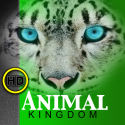
You can have this beautiful HD Animal Kingdom Encyclopaedia for study and learning at your fingertips and use it in schools, colleges, universities or with your family.
You can learn and study in the Encyclopedia useful topics as , Porifera, Bids, Animalia, etc. how it works and much more ...
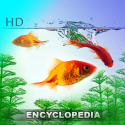
This is an Encyclopedia studying many aspects of marine life
Behavior, nutrition, life cycles etc.. of many species in general
and everything related to the aquatic world.
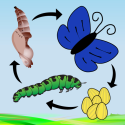
This Life Cycles App is created by a team of high school students, educators, and parents in Texas. It is easy to use, intuitive and most importantly, provides educational content with great illustrations and narrations for students, schools and montessori's.
Appropriate for children ages 2-10+.
Following life cycles are covered in this app at this moment:
- Frog Life Cycle
- Water Life Cycle
- Butterfly Cycle
- Plant Cycle
- Pollination
- Photosynthesis
- Moon Phases
- Nitrogen Cycle
- Oxygen Cycle
- Rock Cycle

Earth Science Regents Buddy is the ultimate tool for learning Earth Science. This app was designed by a teacher who has used all possible multimedia resources in the classroom for teaching regents curriculum. Earth Science Regents Buddy is not only an app for learning Earth Science, but also an app for teachers. The features of this app makes studying extremely convenient.
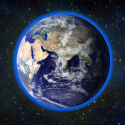
Get Planet Earth 3D on the App Store. See screenshots and ratings, and read customer reviews.

Hello, my name is Tim O'Brien. I'm an astronomer working at The University of Manchester's Jodrell Bank Observatory. As an astronomer my job is to try and understand how the universe works and my main interest is why some stars explode - more about this later! I also get to visit lots of schools and share amazing facts with children and teachers about the Sun, Earth and Moon, the stars and planets, and the Universe as we know it! Now, in the Children’s University, I can share the excitement with you. I hope you enjoy the journey!
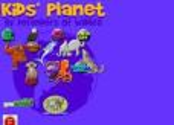
Click on 'Next' to go to the
next page and 'Back' to move back a page or click on a number to go straight to that page.
Click 'Begin' to begin!

This is where you’ll find in-depth descriptions of wildlife, discussions on issues, actions that you can take to help wildlife, and educational materials that teachers and group leaders can use.

Find information and classroom materials for Geography Action and Habitats, an annual K-12 program for teachers from National Geographic.

EekoWorld invites children to explore, experiment, and collaborate as they learn about conservation, the environment and the important role they play in taking care of the earth

An interactive woodland and pond scene where children aged 8-9 can spot plants and animals, and then place them into food chains.

An interactive woodland scene where children aged 10-11 can spot plants and animals, and then place them into a food web or sort them with a key.
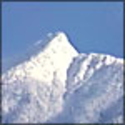
Canada is so big that places across the country are really different from each other in lots of ways. Vancouver and Montreal definitely don't have the same weather, and the animals you would find on Prince Edward Island are very different from the ones you would find in Saskatchewan. The geography of Canada plays a big part in our lives, wherever we live in it!
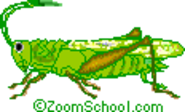
Habitat Animal Printouts. The Earth has many different environments, varying in temperature, moisture, light, and many other factors. Each of these habitats has distinct life forms living in it, forming complex communities of interdependent organisms. A complex community of plants and animals in a region and a climate is called a biome.
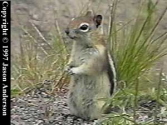
Learn about the different ecosystems and biomes on our planet. Also, find out about the water, carbon, and nitrogen cycles, as well as the food chain. Find out how we are disrupting these important processes.

There are many different
kinds of plants and animals on the Earth, but only certain kinds
are naturally found at any particular place. (We are not counting
zoos here!) For example, cacti are found in the desert, polar bears
are found in the Arctic, and elephants are found in central Africa
and India. So, why don't people living in south Texas have to be
on the lookout for snow leopards, or why don't kids in Minnesota
have to worry about finding giant boa constrictors in their back
yards? It is because these animals are not adapted to live in the
average weather conditions found in Texas or Minnesota.
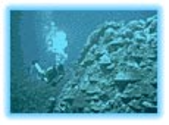
Welcome to the World's Biomes Page! Biomes are defined as "the world's major communities,
classified according to the predominant vegetation and characterized by
adaptations of organisms to that particular environment" (Campbell).
